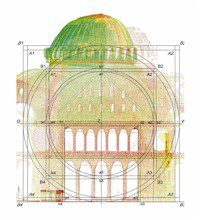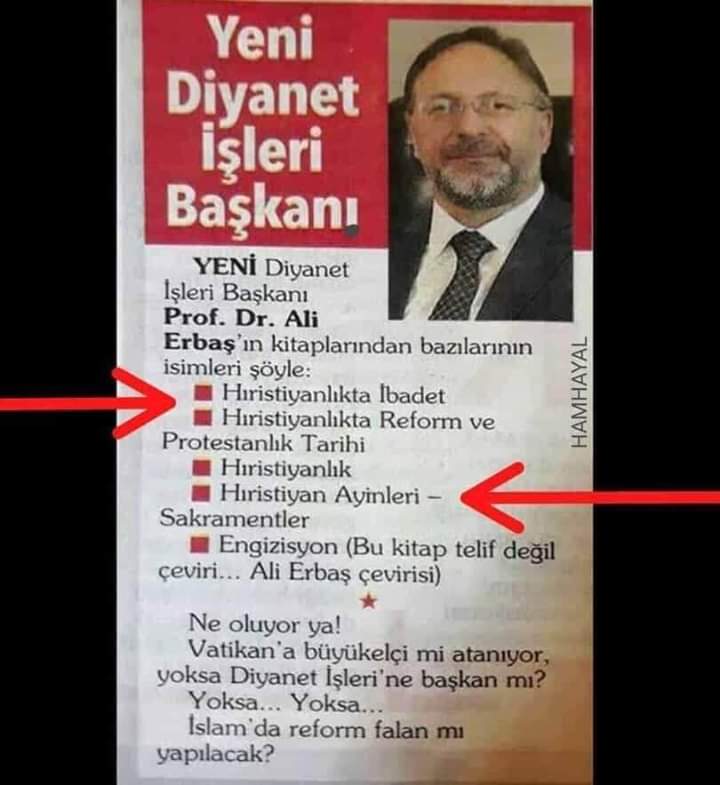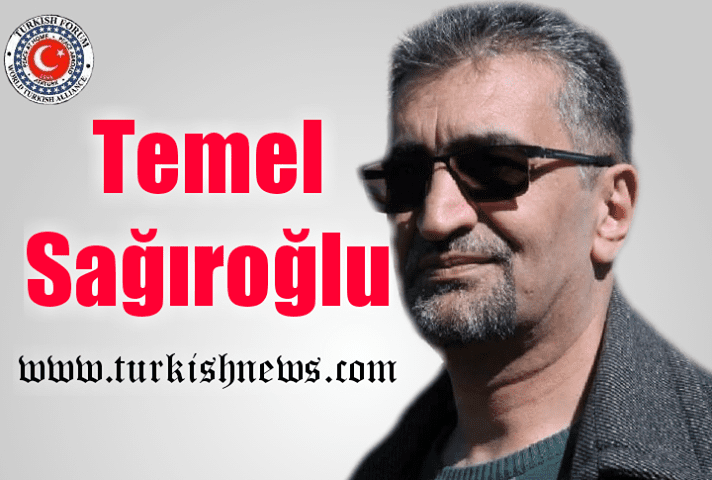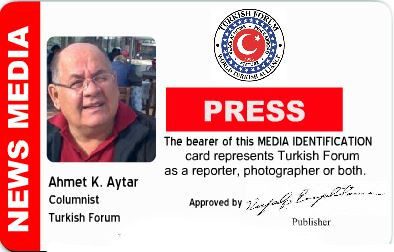Ayasofya

Bir Mimari Şaheser; Aya Sofya
İstanbul’da bulunan en önemli Bizans mimarisi kiliselerden biridir. Tüm Bizans kiliselerinin en görkemlisi Ayasofya’dır. Bu kilise mimarlar Tralles Anthemios ve Miletus Izidorus tarafından tasarlanmıştır. İkinci Ayasofya’nın bu inşaatı 532’de İmparator Justinian’ın emriyle başladı ve daha önceki bir yapının kalıntıları üzerine inşa edildi. Efes, Atina, Roma ve Delphi’den malzemeler getirildi ve bu muhteşem binanın yapımında kullanıldı. Kilise beş yıl sonra 537 yılında ibadete açılmıştır. Ayasofya’da 31-33 metre çapında ve 54 metre yüksekliğinde büyük bir kubbe vardır. Kilise 557 depreminden büyük zarar gördü ve Mimar İzidorus’un yeğeni yapının onarımını denetledi.
Ayasofya’nın inşası sırasında Bizans Roma’nın etkisi altında olduğu için, bu yapı, Bizanslıların standart kilise mimarisi ile Roma mimarisinin ihtişamının bir karışımıdır. Kilisenin orijinal mozaikleri Iconoclasts tarafından ciddi şekilde hasar gördü, ancak Iconoclasm döneminin ortadan kalkmasından sonraki 9. yüzyılda eskisinin yerini yeni mozaikler aldı.
İç yüzeyleri süslemek için kullanılan mozaiklerde dini konuların yanı sıra imparator da bir konu olarak kullanılmıştır. Bir mozaik Meryem Ana’yı imparator Justinian ve Constantine’nin yanlarında oturanla tasvir eder. Başka bir mozaik, İsa’yı İmparator Leon 7’nin önünde diz çökmüş bir tahtta oturduğunu gösteriyor. Başka bir mozaik, Meryem ve Vaftizci Yahya’nın İsa’dan insanlar adına merhamet için yalvarırken gösteriyor. Tüm bu mozaikler Helenistik etkilerin izlerini taşır. Ayrıca emperyal ailenin diğer üyelerinin birkaç mozaik “portresi” de var. Portre sanatı Bizans döneminde çok gelişmiştir. Fatih kenti ele geçirdikten sonra bu yapı Müslümanlar tarafından ibadet için kullanıldı. 1934 yılında Atatürk yapının müze olarak kullanılmasını emretti.
An Architectural Masterpiece; Hagia Sophia
The most important Byzantine architecture found in Istanbul consists of churches. The most magnificent of all of the Byzantine churches is the Hagia Sophia. This church was designed by the architects Anthemios of Tralles and Izidorus of Miletus. This construction of the second Hagia Sophia was started in 532 by the order of the Emperor Justinian and was built over the ruins of an earlier structure. Materials were brought from Ephesus, Athens, Rome, and Delphi and were used in the construction of this magnificent building. The church was opened for worship five years later, in 537. The Hagia Sophia has a diameter of 31-33 meters and a height of 54 meters and is covered with a large dome. The church was considerably damaged by the earthquake of 557 and the nephew of the Architect Izidorus supervised the repair of the structure.

Hagia Sophia 1880 – 1900 Aya Sofya
A symbol of Christian and Islamic heritages, Saint Sophia towers above the Golden Horn (photo) and the Bosporus strait connecting Europe and AsiaBecause Byzantium was strongly under the intluence of Rome at the time of the construction of the Hagia Sophia, this structure is an amalgam of the magnificence of Roman architecture with the standard church architecture of the Byzantines. The original mosaics of the church were severely damaged by the Iconoclasts, but new mosaics replaced the former in the 9th century after the period of Iconoclasm had disappeared.
Besides the religious subjects of the mosaics used to decorate the interior surfaces, the emperor was also used as a subject. One mosaic depicts the Virgin Mary with the emperors Justinian and Constantine sitting at her sides. Another mosaic shows Jesus sitting on a throne with the Emperor Leon 7 kneeling before him. Another mosaic is of Mary and John the Baptist imploring Jesus for mercy in the name of the people. All these mosaics bear traces of Hellenistic influences. There are also several mosaic “portraits” of other members of the imperial family. Portrait art was very advanced during the Byzantine period. After Fatih captured the city this structure was used for worship by the Moslems. In 1934 Ataturk ordered that the structure be used as a museum.
More Reading
Deciphering the “Eighth Wonder of the World”
 Just like the entire Hagia Sophia, the south wall is also based on the proportions of a double circle and a double squareAlmost one and a half thousand years after its construction in the center of ancient Constantinople, Saint Sophia* has divulged the secret of its design principle. Volker Hoffmann, professor at the Institute for Art History at the University of Bern, deciphered this using state-of-the-art HDS laser technology from Leica Geosystems. Some of the first laser evaluations went on show for the first time in mid July 2004 in Istanbul at the Congress of the International Society for Photogrammetry and Remote Sensing (ISPRS) and attracted numerous visitors. In mid-October, the Leica HDS3000 was used to record the floors of this building. The handheld laser meter Leica DISTO™ also played an important role at an early stage of the research project.
Just like the entire Hagia Sophia, the south wall is also based on the proportions of a double circle and a double squareAlmost one and a half thousand years after its construction in the center of ancient Constantinople, Saint Sophia* has divulged the secret of its design principle. Volker Hoffmann, professor at the Institute for Art History at the University of Bern, deciphered this using state-of-the-art HDS laser technology from Leica Geosystems. Some of the first laser evaluations went on show for the first time in mid July 2004 in Istanbul at the Congress of the International Society for Photogrammetry and Remote Sensing (ISPRS) and attracted numerous visitors. In mid-October, the Leica HDS3000 was used to record the floors of this building. The handheld laser meter Leica DISTO™ also played an important role at an early stage of the research project.
Every point of Saint Sophia’s main dome is recorded in 3D in this HDS laser scan file. Using the Cyclone software from Leica Geosystems, it is possible to view and measure the building from various perspectives on the PCFloating with apparent weightlessness over the main room is the vast dome of the Cathedral of Saint Sophia. Commissioned by Emperor Justitian during the late antiquity period, this UNESCO World Cultural Heritage site is regarded as the eighth wonder of the world. According to the plans drafted by the mathematician Anthemios von Tralles and the architect and structural engineer Isidoros von Milet, the “Aya Sofya”, which is now open to the public as a museum, was built in six years during 532 and 537 AD. However, the original plans of this building have been lost without a trace. For hundreds of years, experts have tried to fathom just how the scientists and artists working in the 6th century managed to construct a freely suspended dome measuring almost 56 meters high and 31 meters wide, supported only by four pillars. Considering the technical equipment available at the time of its construction, many experts still regard this building even to this day as one of the boldest feats of construction ever to have been achieved by the human hand.
The “impossible task” of determining the dimensions
The pillar heights of the south wall also follow the uniform design principle to the precise centimeter of the “master plan” deciphered by Volker Hoffmann“The key experience on entering the main room through the emperor’s gate, which immediately presents itself in full view exposing its full width and height up to the vertex of the huge dome, is the impossible task of finding a clear relationship to the proportions and an accurate calculation of the dimensions“ writes the Marco Polo travel guide. This phenomenon, which was intended by its architects, is produced by the spatial structure, the apparent weightlessness of the dome, and the bewildering abundance of direct and indirect lighting effects. Thanks to the work of the Bernese art historians, insights into these dimensions and their consistent application by the architects and builders of the day are now available.
Constructional wonder of the world from one to one point zero six
In the evening, after having closed Saint Sophia for visitors, Professor Volker Hoffmann and Nicholas Theocharis are able to complete their work on the floorVolker Hoffmann working together with his employee Nikolaos Theocharis in a research project sponsored by the Swiss National Fund found that the entire design of Saint Sophia is based on an analemma. This is a projection technique that was described by Ptolemaeus. This technique made it possible to interconnect the earth and the canopy of heaven in accordance with the view of the world at the time: the sphere representing the sky, god and the church, and the cube representing the earth with its four directions, above and below, and the Emperors real. For Saint Sophia, according to Volker Hoffmann’s findings, Anthemios and Isidoros devised an overlapping double-square analemma as a uniform design shape for the ground plan and the elevation of the cathedral, penetrating each other three-dimensionally in the form of a cube and sphere. After performing 3-D laser measurements with the aid of a HDS™ Leica 3000 laser scanner at Saint Sophia, the two scientists from the University of Bern used the technique known as reverse engineering to decipher a “master plan” generated some 1470 years ago. It is based on a ratio of 1 to 1.06 of the small square to the large square. On the basis of the investigations they have performed to date, the researchers have arrived at the conclusion that “there are no layout-related points or lines in Saint Sophia that cannot be deduced from this master plan using geometric logic.” The Leica Disto also played an important role. In Volker Hoffmann’s words: “Thanks to this compact and highly practical laser measuring instrument, we were able for the first time to determine the precise distances of the four supporting pillars at the simple press of a button. This was highly important at the start of our work for the calculation of the dimensions of the double circle/double square.”
Ingenious design principle reconstructed
Each year, over one million visitors admire Saint Sophia, the ancient eighth wonder of the worldThis design and building principle described by Volker Hoffmann as the “master plan” of Saint Sophia is truly ingenious. “Putting it simply, the master plan was marked out with pegs and strings on the building site, meaning that the builder then only had to measure in the double square, which in turn allowed him to transfer across very precisely all the other points (pegs) and lines (strings and/or lines of bearing) of the Saint Sophia architectural elements”, says the professor for architectural history and preservation of historical monuments from the University of Bern. In the second half of April 2005, following the completion of the laser evaluations and after consulting the museums director Mustafa Akkaya, results of this research work are to be presented in the form of an exhibition for the 14 million inhabitants of Istanbul and for the scores of visitors that flock to Saint Sophia. The two thousand-odd photogrammetry and remote sensing experts who travelled to the ISPRS Congress in July 2004 have already gained an insight into this in Istanbul at the Leica Geosystems exhibition stand. The final results are to be presented also in exhibitions in Berlin and Bern. Exhibition sites in the US and in France are also foreseen.
Until now, no one had uncovered the secret of the design principle used in this building, which is devoted to Holy Wisdom, Saint Sophia –at least not until Volker Hoffmann, together with his employee Nikolaos Theocharis, finally succeeded in deciphering it using state-of-the-art 3-D laser measurement techniques some 1470 years later. With is long history as the principal imperial church of early-Christian Greek Orthodoxy, as a mosque, and now as a museum, Saint Sophia represents the history of the Occident and the Orient as no other building can.
Comments by: W P Mallow
Your site uses “Saint Sophia” The name is “Hagia Sophia” which is Greek for “Holy Wisdom”. Justinian would NOT have named “his church” after a woman.
Source: https://www.turizm.net/turkey/history/hagiasophia.html
Fatih Sultan Mehmet’in aziz emaneti Ayasofya-i Kebir Camii Şerifi
-

AYASOFYA MESELESİ VE MONTRÖ BAĞLANTISINI ANLATMIYORLAR
AYASOFYA MESELESİNİN GERÇEK SEBEBİNİ VE MONTRÖ ANLAŞMASI İLE İLGİLİ BAĞLANTISINI ANLATMIYORLAR. AYASOFYA, İSTANBUL’un SİLAHLANDIRILMASI VE HİTLER’DEN KORUNMASI İÇİN MÜZE HALİNE GETİRİLDİ. BU OLAY O DÖNEMİN […]
-

Ayasofya’nın orijinal hali
Şu çok ilginç bir Ayasofya resmi. 15. yüzyılın ortasında İstanbul alındıktan sonra camiye çevrilen yapının orijinal haliyle ilgili fikir vermesi açısından değerli. Muhteşem bir tablo. […]
-

Ayasofya’ya “Baş İmam” olarak atanan Prof. Dr. Mehmet Boynukalın
Ayasofya’ya “Baş İmam” olarak atanan Prof. Dr. Mehmet Boynukalın, Dünya Emekçi Kadınlar Günü’nde attığı tweetle yine tepki topladı. Mehmet Boynukalın ; İlkemiz “Kısasta hayat vardır“ […]
-

Gli öldü
24 Eylül tarihinden beri Levent’teki özel bir veteriner kliniğinde tedavi gören kedi Gli maalesef yaşamını yitirdi. Ayasofya’nın kedisi olarak bilinen Gli, Obama’nın İstanbul ziyaretinde tüm […]
-

Ee yarın nereyi cami yapıyoruz?
– Mısır’ın köklü üniversitelerinden El-Ezher’in eski İmam Yardımcısı Abbas Shuman, Ayasofya kararının İslam ile örtüşmediğini belirtti: “İslam’da caminin kiliseye dönüştürülmesine izin verilmediği gibi, kilisenin de […]
-

Yavuz Ağıralioğlu : Ayasofya Konusunda Kızılması Gereken Muhalefet Değil , Diyanet İşleri Başkanıdır !
İYİ Parti Sözcüsü İstanbul Milletvekili Yavuz Ağıralioğlu Sosyal medya üzerinden ,son yaptığı basın açıklamasında dikkat çeken ifadelere yer verdi. Sayın Cumhurbaşkanının Ayasofya’nın açılış coşkusunu gölgelediği […]
-
AYASOFYA NE KAZANDIRDI?..
Herkesin övünme payı çıkardığı, sözde 86 yılın zulmünün bittiği gönül okşamaların sonunda Ayasofya -açıkken- açıldı.Kime ne faydası olacak?İhtiyaç mı?Siyasi mi?Hepsinden bir parça var ama bana […]
-

Namaza açık olan Ayasofya neden büyük bir şovla yeniden açıldı.?????
TC Mehmt Ali Sakalli3h · “Zincirler kırılsın, Ayasofya açılsın!” diye bağırıyorlardı.İşte, açıldı Ayasofya…Şimdi ne olacak?Bütün sorunlar bir çırpıda halledildi mi?– Ülkedeki açlık, sefalet bitecek mi?– […]
-

KEŞKE DESE …!!!
Sayesinde açılışını yaptığınız..namazkıldığınız Ayasofya’yı..ve başkanı olduğun kurumun (Diyanet)kurucusu olan bir insana..Geçtik dua falan etmeni..isim vermedenlanet okuyorsun öyle mi..?Nankörsünüz..yazıklar olsun size..! der..geçeriz biz..Yani :Herhangi bir yaptırım […]
-

BAŞTAN AŞAĞI HIYANET…!!!
Bugun Ayasofya camii’nde kılınan cuma namazında Diyanetin başı olan namı diğer Hıyanet Atatürk’e lanet okudu ….!!! Sormazlar mı diyanete o kürsüye ,bu saltanata kim sayesinde […]
-

YOĞUN BAKIMDA Kİ HASTAYA VER BİR AYASOFYA
Soyulmuşuz, yağmalanmışız, cep delik, cepken delik… İnsanlar borç batağına.. Çocuğunu doyuramayan anne intihar ediyor. Çocuğuna pantolon alamayan baba intihar ediyor. Borç batağına saplanan insanlar intihar […]
-

AYASOFYA ÜZERİNDEN YAPILAN ATATÜRK DÜŞMANLIĞI
AYASOFYA ÜZERİNDEN YAPILAN ATATÜRK DÜŞMANLIĞI Sosyal medyada paylaşım rekorları kıran ve bazı gazeteci ve köşe yazarları tarafından gazete köşelerine ve internet sitelerine taşınan “İslam Din […]
-

TARİHTE AYASOFYA…!!!
Ayasofya ve bilinmeyenleri Dünya mimarisinin en önemli şaheserlerinden birisi olarak kabu ledilen Ayasofya hakkında ilginç efsaneler var. Bunları bir araya getiren Ayasofya Efsaneleri adlı kitap, […]
-

Ayasofya, Dünya Mirası, Vakıf ve İbadet Özgürlüğü
Prof.Dr. Alaeddin Yalçınkaya Ayasofya, Dünya Mirası, Vakıf ve İbadet Özgürlüğü Ayasofya’nın müzeye çevrilmesine dair 1934 tarihli Bakanlar Kurulu Kararının Danıştay tarafından iptal edilmesi, İslam dünyasında […]
-

AYASOFYA’NIN PERDE ARKASI
Ayasofya meselesinin perde arkası. Cumhuriyet ile bir hesaplaşma mı? Muhafazakar ve milliyetçi cepheye göre Ayasofya’nın camii olması neden çok önemli? Lozan anlaşmasının yıl dönümünde olması […]
-

BUYUR ŞİMDİ BURDAN YAK YUNANİSTAN MÜZE YAPTIĞI OSMANLI CAMİLERİNİN DURUMUNU TARTIŞMAYA AÇTI
Attığınız taş, ürküttüğünüz kurbağaya değmeyecekse, o taşı atmayacaksınız arkadaşİçeriyi bir şekilde idare eder yönetirsiniz yönetmesinede, dış politikada içeride yaptıklarını yaparsanız hezimete uğrar burnunuzun üstüne düşersiniz. […]
-

AYASOFYA’ DAN MESCİT- İ AKSA’ YA
Erdoğan Müslüman Kardeşler’in fedasıdır!Yeni Osmanlıların başı olarak günün birinde Hilafeti ve Kudüs’ü geri getireceğini düşlüyor. *Gazze’de Müslüman Kardeşlerci HAMAS’ı,Libya’da Müslüman Kardeşler için Ulusal Anlaşma Hükümeti’ni […]
-

200.000 Camii
Dünyada cami sayısı olarak, en fazla ibadet evi bulunan Ülkedir Türkiye!Bu rakam, 40 seneden bu yana tekrarlanan 80 000 olmayıp, AKP döneminde inanılmaz bir hızla […]
KONU HAKKINDA YAZILAR
-
AYASOFYA MESELESİ VE MONTRÖ BAĞLANTISINI ANLATMIYORLAR
-
Ayasofya’nın orijinal hali
-
Ayasofya’ya “Baş İmam” olarak atanan Prof. Dr. Mehmet Boynukalın
-
Gli öldü
-
Ee yarın nereyi cami yapıyoruz?
-
Yavuz Ağıralioğlu : Ayasofya Konusunda Kızılması Gereken Muhalefet Değil , Diyanet İşleri Başkanıdır !
-
AYASOFYA NE KAZANDIRDI?..
-
Namaza açık olan Ayasofya neden büyük bir şovla yeniden açıldı.?????
-
KEŞKE DESE …!!!
-
BAŞTAN AŞAĞI HIYANET…!!!
-
YOĞUN BAKIMDA Kİ HASTAYA VER BİR AYASOFYA
-
AYASOFYA ÜZERİNDEN YAPILAN ATATÜRK DÜŞMANLIĞI
-
TARİHTE AYASOFYA…!!!
-
Ayasofya, Dünya Mirası, Vakıf ve İbadet Özgürlüğü
-
AYASOFYA’NIN PERDE ARKASI
-
BUYUR ŞİMDİ BURDAN YAK YUNANİSTAN MÜZE YAPTIĞI OSMANLI CAMİLERİNİN DURUMUNU TARTIŞMAYA AÇTI
-
AYASOFYA’ DAN MESCİT- İ AKSA’ YA
-
200.000 Camii
